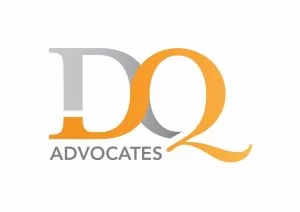1. Many of us spend the majority of our working lives in or at work. The positive and negative experiences in the workplace and in work related interactions therefore can play a huge role in an individual's wellbeing.
Decades of accumulated research evidence tells us that critical human needs are met through employment. These are broadly considered to include tangible economic resources and security; the opportunity provided by meaningful work to develop life skills and a sense of worth; and the benefits of social relationships and respect from peers. The satisfaction of these needs is important for individuals but also, at a more general level, for the health and well-being of society (O'Toole & Lawler, 2006).*
2. Employers have a legal duty to take reasonable care for the safety of their employees and see that reasonable care is taken to provide them with a safe place to work. This means employers should take all steps which are reasonably possible to ensure the health, safety and wellbeing of their employees.
The Equality Act 2017
3. The Equality Act 2017 (EA 2017) provides protection against discrimination or less favourable treatment for individuals and groups who share 'protected characteristics' of: age, disability, gender reassignment, marriage, sex, sexual orientation, race, religion and in doing so supports employers in the pursuit of 'wellbeing' for staff by setting the parameters for proper dealing in an employment context (and beyond, to include the provision of goods and services and pre-employment (recruitment) stages). Get the "employee wellbeing" balance right and the oft-touted advantages for the employer include: improved workplace performance; profitability; productivity; quality of output; job satisfaction.
4. A glossary of the key provisions of the EA 2017 can be found here.
5. The reach of the EA 2017 extends to not only those who have a given protected characteristic, but includes perceived discrimination, harassment and victimisation.
6. At its core the EA 2017 seeks to place everyone on an equal footing and in doing so it promotes and protects workplace dignity by preventing discrimination and promoting equality of opportunity. The English case of English v Thomas Sanderson Blinds Ltd [2009] 2 All ER 468, is a useful case on this point:
Perceived Discrimination
7. English involved the incessant mockery of an employee on grounds of sexual orientation. The employee was a heterosexual, married man with three teenage children. He alleged that for a protracted period he had been subjected by four colleagues at work to sexual innuendo suggesting in obvious terms that he was homosexual. Someone had discovered that he had been to a boarding school and lived in Brighton, and these facts seem to have been the genesis of the suggestions. He had to endure names like 'faggot', and on two occasions at least, lurid comments in the house magazine. He accepted that his tormentors had known that he was not gay. Mr English eventually left his employment and brought a claim for harassment on the grounds of sexual orientation.
8. By way of reminder, a person commits harassment if they subject an individual to conduct which:
- is unwanted, and
- is 'related to' one or more of the protected characteristics which are covered (e.g. race)
- where the unwanted conduct has the purpose or effect of:
- violating the victim's dignity or
- creating an environment that is intimidating, hostile, degrading, humiliating or offensive to the victim.
9. The issue in the appeal was whether someone who is ribbed or teased—or, it might be said, tormented—by 'homophobic banter' (the phrase used in this case) is or may be thereby harassed within the meaning of the legislation when (a) he is not gay, (b) he is not perceived or assumed to be gay by his fellow workers, and (c) he accepts that they do not believe him to be gay. The Court held that perceived harassment discrimination was found. In its judgment the Court of Appeal considered that it did not matter whether he was gay or not. The calculated insult to his dignity, which depended not at all on his actual sexuality, and the consequently intolerable working environment were sufficient to bring his case within the equality legislation in force at the time.
10. In his judgment, Lord Justice Sedley stressed the importance of upholding anti-discriminatory law in the workplace [and thereby linking the equality legislation to notions of workforce wellbeing]:
[37] ...The incessant mockery ('banter' trivialises it) created a degrading and hostile working environment, and it did so on grounds of sexual orientation. That is the way I would prefer to put it. Alternatively, however, it can be properly said that the fact that the appellant is not gay, and that his tormentors know it, has just as much to do with sexual orientation—his own, as it happens—as if he were gay.
[38] If, as is common ground, tormenting a man who is believed to be gay but is not amounts to unlawful harassment, the distance from there to tormenting a man who is being treated as if he were gay when he is not is barely perceptible. In both cases the man's sexual orientation, in both cases imaginary, is the basis—that is to say, the ground—of the harassment. There is no Pandora's box here: simply a consistent application of the principle that, while you cannot legislate against prejudice, you can set out in specified circumstances to stop people's lives being made a misery by it.
11. It is trite law that looking after employee wellbeing makes good business sense. Granted, some aspects of workforce wellbeing lie outside of an employer's direct control –"you cannot legislate against prejudice"- but employers can direct their own, internal culture and mould it to one that seeks to protect its employees and keep the wellbeing see-saw balanced.
Working with the EA 2017
12. Workplace stress is exacting an ever-higher physical and psychological toll. It adversely affects productivity, drives up voluntary turnover, and costs employers massively in both financial terms and lost management time. This is nothing new. Many companies are aware of these negative effects, and many have gotten busy devising ways to counteract them. Efforts range from initiatives to encourage exercise, standing desks and nutrition talks, to perks such as in-house relaxation sessions, flu jabs and snack bars. In the midst of all this activity, it's easy to overlook something fundamental: the work environment itself and basic human interaction.
Unlawful harassment
13. The explosion of the #metoo movement provides endless 'fodder' for analysis in a new age where men and women are asserting their right to be treated with dignity. And with the festive party season almost upon us and the risk of the Christmas party bottom slapper, it seems as good a place as any to focus the remainder of this article.
An employer may be liable for contraventions of the EA 2017:
- on its own behalf
- vicariously, for the acts of its employees
- as principal, for the acts of its agents
15. In this regard, anything done by an employee in the course of employment is treated as having also been done by the employer regardless of whether the acts were done with the employer's knowledge or approval. There is a defence available to an employer if it can show that it took all reasonable steps to prevent the employee from doing the discriminatory act. That is, the employer can demonstrate that those actions were undertaken without any approval whatsoever and that such employees were acting completely on their own initiative. This would include showing preventive steps were taken and that the employer took appropriate action if and when the conduct became known to it.
16. In this regard, simply having an equal opportunities or dignity at work policy on record will not be enough. The employer will need to show that its policies were effectively brought to the attention of staff, that training was carried out for managers and staff, that staff have a means of raising concerns (including anonymously) and that prompt, consistent and serious action is taken in relation to any breaches.
– Have in place good anti-discrimination policies and procedures – Ensure these are put into practice rather than remaining 'paper only' measures
|
Hands off management, please!
17. The recent case of Raj v Capita Business Services Ltd [2019] UKEAT/0074/19 is an interesting post-#metoo judgment which also demonstrates that tribunals will consider each case on its facts.
18. The Facts: Mr Raj worked as a customer service agent for Capita Business Services before being dismissed for underperformance. He later brought claims against Capita and his manager, Ms Ward, for sexual harassment. He alleged that, on several occasions, while sitting at his desk in an open plan office, Ms Ward had stood behind him and given him a massage, feeling his shoulders, neck and back. Mr Raj alleged that this massage was unwanted conduct either of a sexual nature or relating to his sex.
19. Held: Ms Ward's massage of Mr Raj's shoulders (a 'gender neutral' body part, according to the Tribunal) had been performed in a jokey way in an open plan office and had been accompanied by comments of 'well done' to an underperforming employee. This did not constitute conduct of a sexual nature; nor was it conduct related to sex. Although her conduct was unwise and uncomfortable, it did not fall foul of the equality legislation. It was considered, on the facts, to be "misguided encouragement".
20. Where does that leave employers as Christmas party season approaches?
21. Whilst Raj demonstrates that each case will turn on its own facts, the fact remains that it is for employers to set the parameters for expected behaviour, both in the workplace itself and socially (as may be the case) "in the course of employment". 'Tis the season to be jolly and whilst an employer can't always stop bad behaviour, induced by alcohol or general festive exuberance, it can manage the expectations of staff so that everyone knows the standards of conduct that will be expected from employees at work social events and the consequences if these are not maintained. While it may be too early (November?) to wish readers a Merry Christmas, planning the office Christmas party should act as a timely reminder to employers to ensure that company disciplinary, harassment and discrimination policies are in force and up to date.
22. Please contact the DQ employment team if you would like to discuss this article or any matter of employment of equality law further.
This article has been adapted from a presentation delivered by Leanne McKeown to delegates at the Department of Health and Social Care, Public Health Directorate's Workplace Wellbeing Conference on 21 November 2019.
The content of this article is intended to provide a general guide to the subject matter. Specialist advice should be sought about your specific circumstances.

